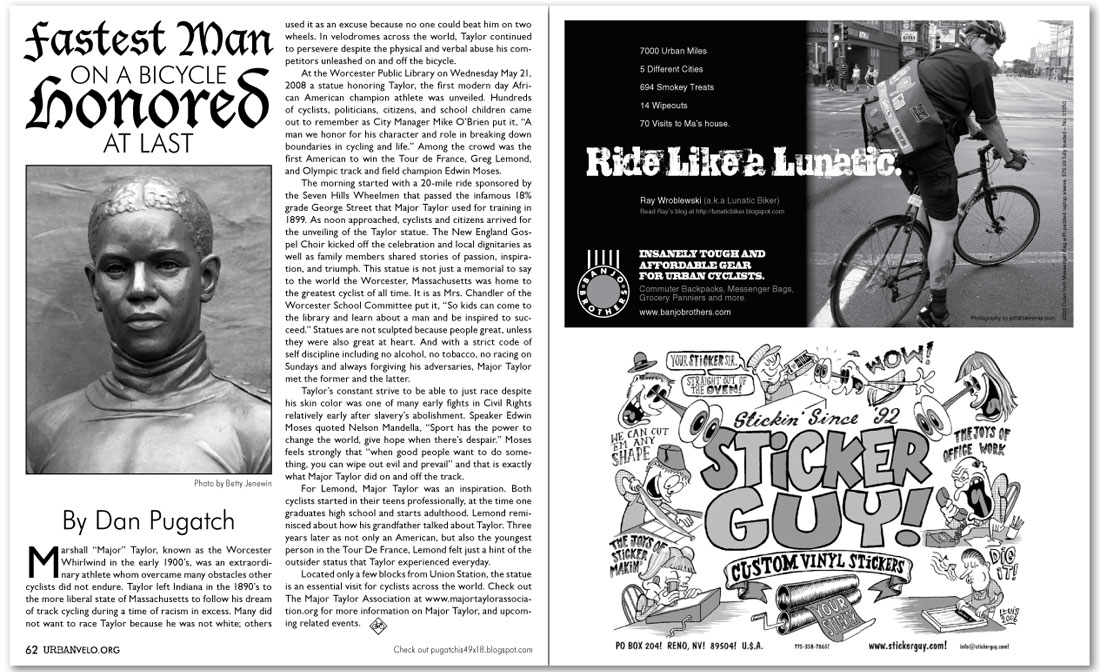Marshall “Major” Taylor, known as the Worcester Whirlwind in the early 1900’s, was an extraordinary athlete whom overcame many obstacles other cyclists did not endure. Taylor left Indiana in the 1890’s to the more liberal state of Massachusetts to follow his dream of track cycling during a time of racism in excess. Many did not want to race Taylor because he was not white; others used it as an excuse because no one could beat him on two wheels. In velodromes across the world, Taylor continued to persevere despite the physical and verbal abuse his competitors unleashed on and off the bicycle.
At the Worcester Public Library on Wednesday May 21, 2008 a statue honoring Taylor, the first modern day African American champion athlete was unveiled. Hundreds of cyclists, politicians, citizens, and school children came out to remember as City Manager Mike O’Brien put it, “A man we honor for his character and role in breaking down boundaries in cycling and life.” Among the crowd was the first American to win the Tour de France, Greg Lemond, and Olympic track and field champion Edwin Moses.
The morning started with a 20-mile ride sponsored by the Seven Hills Wheelmen that passed the infamous 18% grade George Street that Major Taylor used for training in 1899. As noon approached, cyclists and citizens arrived for the unveiling of the Taylor statue. The New England Gospel Choir kicked off the celebration and local dignitaries as well as family members shared stories of passion, inspiration, and triumph. This statue is not just a memorial to say to the world the Worcester, Massachusetts was home to the greatest cyclist of all time. It is as Mrs. Chandler of the Worcester School Committee put it, “So kids can come to the library and learn about a man and be inspired to succeed.” Statues are not sculpted because people great, unless they were also great at heart. And with a strict code of self discipline including no alcohol, no tobacco, no racing on Sundays and always forgiving his adversaries, Major Taylor met the former and the latter.
Taylor’s constant strive to be able to just race despite his skin color was one of many early fights in Civil Rights relatively early after slavery’s abolishment. Speaker Edwin Moses quoted Nelson Mandella, “Sport has the power to change the world, give hope when there’s despair.” Moses feels strongly that “when good people want to do something, you can wipe out evil and prevail” and that is exactly what Major Taylor did on and off the track.
For Lemond, Major Taylor was an inspiration. Both cyclists started in their teens professionally, at the time one graduates high school and starts adulthood. Lemond reminisced about how his grandfather talked about Taylor. Three years later as not only an American, but also the youngest person in the Tour De France, Lemond felt just a hint of the outsider status that Taylor experienced everyday.
Located only a few blocks from Union Station, the statue is an essential visit for cyclists across the world. Check out The Major Taylor Association at www.majortaylorassociation.org for more information on Major Taylor, and upcoming related events.
